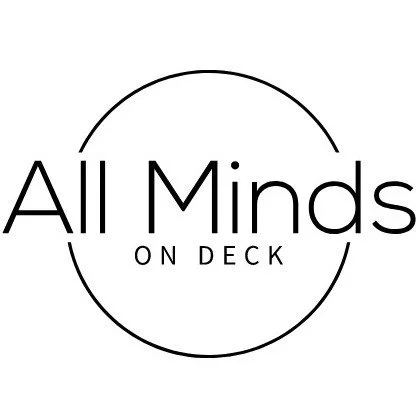The Team Dynamics Underground
The hidden architecture of teams: Why your org chart may be a lie
Walk into any company and ask to see the team structure. You'll get handed a pristine org chart with neat boxes and clean reporting lines. It's about as accurate as a subway map—useful for tourists, useless for understanding how the system actually works.
Real teams operate on four layers simultaneously. Most leaders manage one, ignore two, and don't even know the fourth exists.
Layer 1: Outer Roles (The Obvious)
These are the roles people were actually hired fo - the stuff that shows up in job descriptions and performance reviews. Marketing Manager. Senior Developer. VP of Sales. They matter because they create accountability and keep the lights on.
But here's where things get interesting. Outer roles work beautifully until they don't. The moment your Marketing Manager becomes "the only person who understands our campaigns" or your lead developer becomes "the only one who knows the legacy system," you've accidentally architected yourself into a corner. You now have expensive, walking single points of failure.
The tell-tale sign: when someone goes on vacation and three different fires start burning. That's not bad luck - that's bad role design.
Layer 2: Inner Roles (The Emotional Infrastructure)
Every functional team develops a shadow emotional operating system. Someone becomes the person who brings up uncomfortable truths. Another emerges as the conflict mediator. A third naturally asks the questions nobody wants to hear: "But what if we're completely wrong about this?"
These aren't personality quirks - they're system functions. Teams need someone to initiate difficult conversations or they fester. They need someone to smooth over conflicts or they explode. They need someone to question assumptions or they build products nobody wants.
The problem emerges when these roles crystallize around individuals. When the same person always has to be the bad guy in meetings, they burn out. When emotional labor concentrates instead of distributes, resentment follows.
Watch for the phrase "Why am I always the one who has to..." That's the sound of an inner role going toxic.
Layer 3: Secret Roles (The Parking Lot)
This is where teams hemorrhage potential without realizing it. Every person contains multitudes - different aspects that emerge in different contexts. Your methodical, process-oriented project manager might transform into a creative visionary at home. Your quiet, analytical developer could be a natural teacher who lights up when explaining complex concepts.
Most of these capabilities get left in the parking lot every morning.
Why does this matter? Because the challenges your team faces tomorrow will require capabilities you haven't discovered yet. That breakthrough insight might be locked inside someone's unexpressed creative side. That crucial cross-functional translation might require someone's hidden communication superpowers.
The tragedy isn't just individual - it's systemic. Teams may operate at 60% capacity because they're only accessing the "professional" slice of each person's capabilities.
Layer 4: Ghost Roles (The Invisible)
The most insidious layer consists of influences that aren't even present anymore. The founder who left three years ago but whose voice still dominates strategy discussions. The failed product launch that everyone references but nobody mentions directly. The cultural tradition of "how we've always done things" that nobody questions.
These ghosts often wield more power than anyone currently drawing a paycheck. Teams avoid entire categories of solutions because "we tried that before." They make decisions based on what absent authorities "would have wanted." They optimize for avoiding past failures instead of creating future successes.
The scariest part is that ghost roles compound over time. Each departed leader, each project failure, each cultural norm adds another invisible constraint. Teams slowly calcify under the weight of accumulated ghost wisdom.
When Role Systems Break Down
1) Role overload: One person carries multiple inner roles (conflict initiator AND team cheerleader AND truth-teller). Burnout is inevitable.
2) Role confusion: People don't understand their boundaries or functions aren't acknowledged. Chaos masquerades as collaboration.
3) Suppressed potential: Strong technical performers seem mysteriously disengaged. Their secret roles are suffocating.
4) Ghost paralysis: Past experiences prevent current innovation. The dead hand of history strangles the future.
5) Role nausea: People become sick of playing the same function repeatedly. "Why do I always have to be the one who brings up budget concerns?"
The challenge for a team leader
Most dysfunction stems from unconscious role allocation. Teams develop these patterns organically, which means they develop them badly. Functions migrate to whoever will tolerate them, not who should perform them. Critical capabilities remain buried because nobody thinks to surface them. Historical baggage accumulates because nobody actively manages the ghost population.
The insight that changes everything: roles are team functions, not individual identities. They can be designed, distributed, and evolved consciously.
This requires a fundamental shift in how leaders think about team architecture. Instead of just managing the visible org chart, start managing the invisible role ecosystem. Rotate inner roles so emotional labor gets shared. Create space for secret roles to emerge. Actively decide which ghosts to honor and which to exorcise.
The teams that master this operate like jazz ensembles—fluid, adaptive, with everyone contributing their full range of capabilities. The teams that ignore it operate like rusty machines—predictable, brittle, and prone to breakdown when key components fail.
Your choice: consciously architect your team's role system or let it architect itself. But don't pretend the org chart tells the whole story.
